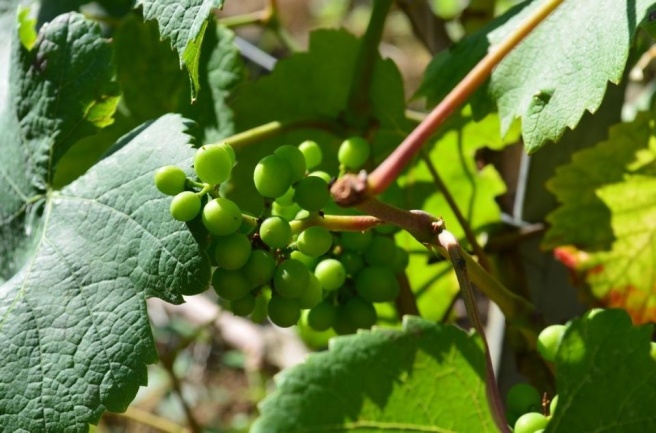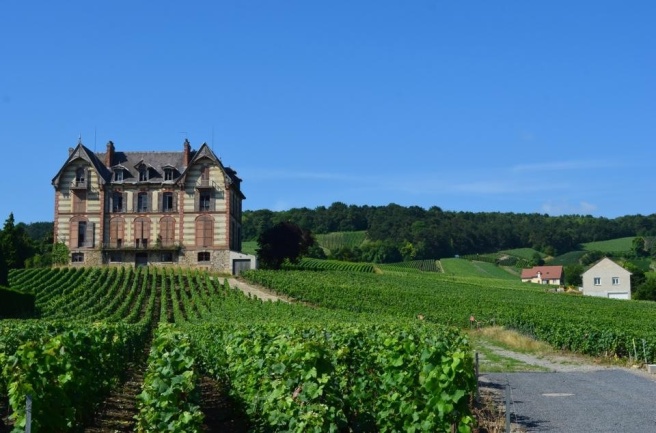In April, I found out I got, yet another, assignment overseas. This time, it was to Southern Belgium working with our international partners at NATO. I am not quite sure how we pulled it off, but we somehow got the opportunity to go from one dream assignment to another.
Not to let an opportunity to be wasted, we took the move as a chance for a road trip from the northern UK to Southern Belgium with a key stop along the way — Champagne, France
For such a well-known, world renowned region, it is surprisingly understated – and simply – French. There are 2 main cities that you can stay in to explore the countryside, Reims or Epernay (plus Troyes, but I recommend one of these two). We decided to stay in Reims as it was only a 2.5 hr drive from our final destiantion.
Staying at a local B&B (http://www.laparenthese.fr/en/), I felt like I had died and entered some sort of French Indie film. The B&B offered a croissant and coffee for breakfast, which you could eat outside in their peaceful garden or by the window in your room, locals could be seen riding bicycles carrying a baguette and the weather was a near perfect 70-75F.
There are tours easily booked for the large champagne houses in the region (your well known Moet, Dom Perignon and Gosset), but these are just store fronts with elaborate costumes and fancy glasses. I was interested in physically going out to the vineyards and observing the champagne process first hand.
This proved surprisingly difficult – I had envisioned renting a bike, biking around to all the vineyards, sampling, and biking some more. However, no vineyards allowed you to just ‘stop in’ for a taste. After finally finding a tour that would accomplish what I was looking for, I soon understood why this was such an impossible task.
There are 320 villages in champagne with over 5000 small producers, yet they only make up 10% of the market of Champagne. 90% of the champagne produced is from your large producers, which buy grapes from farmers in the region and process them in large, sterile factories, not located near their pristine store fronts. While these small, independent producers and growers make up a majority of the population, they are run on such a small, untouristy scale they have no capacity for receiving guests.
I got the opportunity to see this first hand through a highly recommended and wonderful experience called RAW France (http://www.rawfrance.com). Not to be found easily on google, RAW France is run by Rachel, a Brit who fell in love with a local wine producer and saw the opportunity to share the independent champagne industry with the rest of the world.
Taking us on an individualised tour of Sacy, a small village outside Reims, whose whole town is involved in some way in the wine industry, I learned why independent champagne houses are so much better than your large, big name brands. All starting out as towns of farmers who sold their grapes to the large producers, local farmers in the 1950s looked at the price they were getting for the grapes versus the price the champagne houses were selling for the bottles and decided they could do better producing wine themselves, thus the independent champagne movement began.
http://www.france-independent-winegrowers.com/
(this includes all independent wine growers, select the region for the full list)
After showing us around the Wafflart-Briet patches of land spread out in sections over the hillside, we got to see the cellar where the fermentation process begins and where it all ends, in the labelling process. To top off the whole experience, we labeled our own bottles of wine, and concluded with champagne tasting and pairing on the porch of the family chateau overlooking the vineyards we just walked around.
The best part? You can purchase these bottles (of gorgeous) champagne for just € 15-20.Their competators? The same bottle (and quality) will cost you upwards of €100 from one of the large champagne houses. These grapes are taken from the same region, fermented using the same process; the only difference is the marketing. Also, independent producers do not exported; 80% of all champagne produced is drank by the French. They keep all the inexpensive quality stuff for themselves and export the rest!
(Not that I can say I blame them)





Your pictures and description make me want to go to Champagne…..sante!
Wonderful info here! RAW France was a great tip!
Kudos!